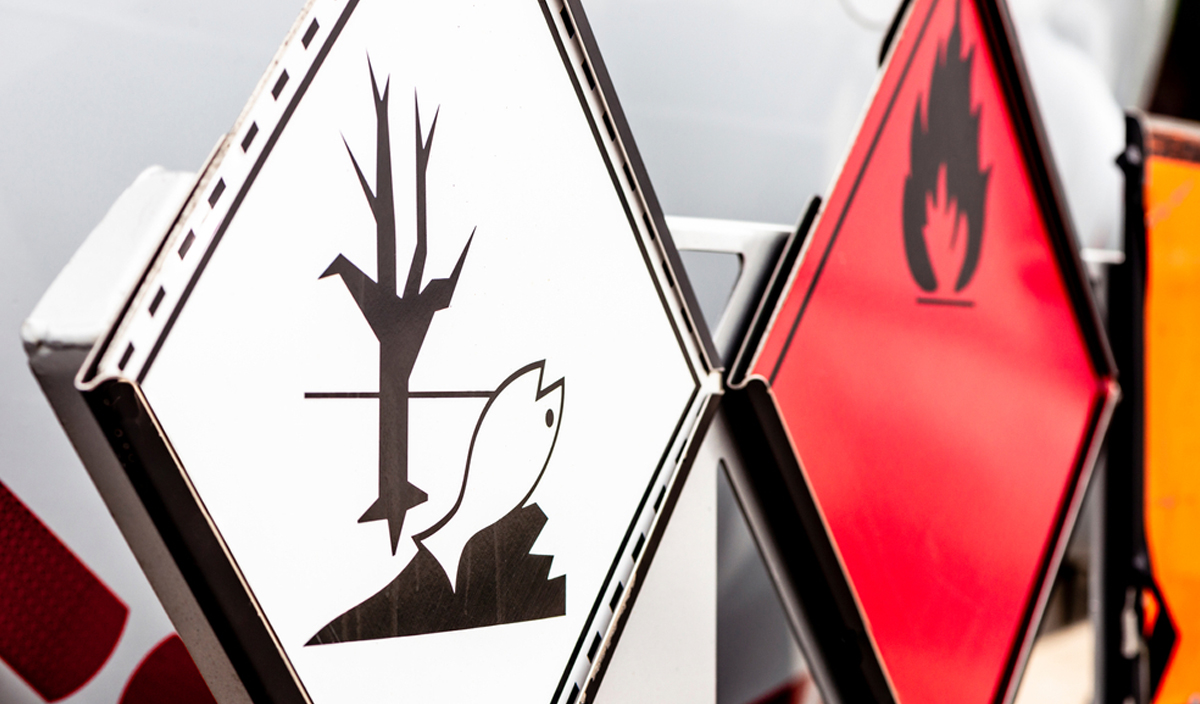
Shipping dangerous goods or hazardous materials (hazmat) is an intricately challenging endeavour. It encompasses stringent rules and regulations that must be diligently adhered to. Non-compliance with any aspect, be it packaging, labelling, or documentation, can result in severe penalties.
Things to consider for a successful hazmat shipping operation
How do mistakes in hazmat shipping occur?
Common mistakes to avoid when shipping hazardous materials
Entrust Your Dangerous Cargo Warehousing and Shipping to TFI
Hazardous materials can encompass a wide range of items, like lithium batteries, portable chargers, aerosols, perfumes, and paint. If your business deals with any of these goods, reducing errors associated with hazmat shipping presents an opportunity to save time and streamline workflows.
Things to consider for a successful hazmat shipping operation
Ensuring the accurate classification of your shipment is imperative to comply with the regulations of local authorities. Here are key considerations for hazmat shipping:
- Packaging – The packaging utilised must adhere to the regulations of controlling bodies regarding materials, construction, and maximum capacity. Additionally, it should prominently display the packaging identification code.
- Labeling – Proper markings, labels, and placards must be affixed to the dangerous good packaging, clearly indicating the hazard class and other required details. These labels should be durable enough to withstand varying temperatures and conditions encountered during transit, avoiding issues such as peeling or ink running.
- Documentation – Shipping papers must contain accurate and essential information, including identification numbers, hazard class, and the quantity of hazardous material being transported.
- Transportation mode – Different modes of transportation may have distinct requirements for specific items. For instance, shipping dry ice via air or sea may entail different regulations compared to ground freight. It is crucial for your system to notify you of potential non-compliance if you deviate from your usual mode of transportation. Whenever feasible, opting for ground transportation is advisable for hazardous shipments.
By meticulously considering these factors and adhering to the appropriate guidelines, compliance is ensured while minimising the risk of errors and penalties. Non-compliance in any of these aspects attracts fines, ranging from minor to substantial amounts for severe violations. Furthermore, violations can lead to significant delays in the delivery process. Therefore, it is crucial to prioritise compliance to avoid financial repercussions and ensure timely shipments.
How do mistakes in hazmat shipping occur?
Hazmat mistakes occur more frequently in the shipping of hazardous materials due to the intricate nature of the associated regulations. These errors can stem from inadvertent omissions of certain requirements or deviations from the prescribed guidelines for specific circumstances.
When a shipper’s hazmat processes are appropriately established, any mistakes that arise are typically attributable to specific workflows. For instance, the failure to use a hazmat label may result from the label being printed separately from the shipping label. By printing all the required labels simultaneously, the likelihood of inadvertently omitting one is significantly reduced.
Common mistakes to avoid when shipping hazardous materials
Inadequate marking and labelling of dangerous goods
One of the prevalent errors often made by inexperienced or untrained dangerous goods personnel is the failure to adequately mark and label hazardous materials. The Dubai Civil Defence imposes strict requirements mandating the proper marking and labelling of hazardous materials. These markings and labels serve as vital communication tools, ensuring that all individuals involved in the transportation process are aware of the material type, its corresponding hazard class, and the necessary precautionary measures to be taken. Neglecting to accurately mark and label hazardous materials undermines the straightforward and effective communication system that has been established and successfully utilised for many years. This oversight can potentially jeopardize lives and pose significant risks.
Incorrectly assuming a material to be non-hazardous without proper awareness of its risks
Inexperienced or untrained employees may lack the necessary knowledge to differentiate between hazardous and non-hazardous materials. Consequently, they may mistakenly assume a hazardous material to be non-hazardous, leading to its inclusion in the transportation chain without appropriate preparation and communication.
Such errors can have severe consequences, depending on the nature of the material, the mode of transportation, and other relevant factors. Undeclared hazardous materials not only expose the shipper to significant fines and penalties but also invite the potential for transportation accidents, with their associated negative repercussions.
We have rounded up below a list of commonly misidentified hazardous items that are erroneously considered non-hazardous by untrained employees:
- Magnetised materials
- Charged capacitors
- Lithium batteries
- Equipment containing lithium batteries
- Pneumatic accumulators
- Equipment with compressed air chambers or gas cartridges
- Contaminated medical equipment
- Dry ice
- Genetically modified organisms or microorganisms
- Perfumes
- Aerosols
It is crucial for employees to receive proper hazmat training to accurately identify and handle hazardous materials, ensuring the safety of all involved in the transportation process.
Insufficient knowledge of mode-specific requirements for dangerous good transportation
It is vital to recognize that the regulatory obligations surrounding the shipment of hazardous materials can vary based on the mode of transportation. Packaging requirements for a specific hazardous item, for instance, may differ depending on whether it is transported by air, water, rail, or road.
For example, magnetized material is subject to regulatory restrictions exclusively when transported by air, primarily due to its potential to interfere with sensitive aircraft instrumentation.
Hence, hazmat personnel must diligently ascertain the mode of transit before engaging in tasks such as packaging, marking, labelling, and documenting hazardous materials. Understanding the mode-specific requirements is essential to ensure compliance and mitigate potential risks associated with the transportation of hazardous materials.
Entrust Your Dangerous Cargo Warehousing and Shipping to TFI
TFI takes pride in its ISO-certified warehouse approved to store and handle commodities classified as dangerous goods. We also demonstrate a strong capability in customs brokerage and global freight forwarding, making us your go-to company that offers complete hazmat logistics solutions under one roof. Moreover, you can rely on our team of hazmat specialists that are trained and experienced in handling all the aspects of dangerous cargo warehousing and shipping.
Speak to our dangerous cargo specialists today, and we’ll provide you with the customised solutions you need!


